It’s fair to say that we’ve dealt with our fair share of messy home improvements. We’ve tackled everything from removing tonnes (literally) of tarmac to tiling our roof, but one of the most frequent questions we get asked is about how to deal with lead paint and if it’s safe to remove lead paint yourself.
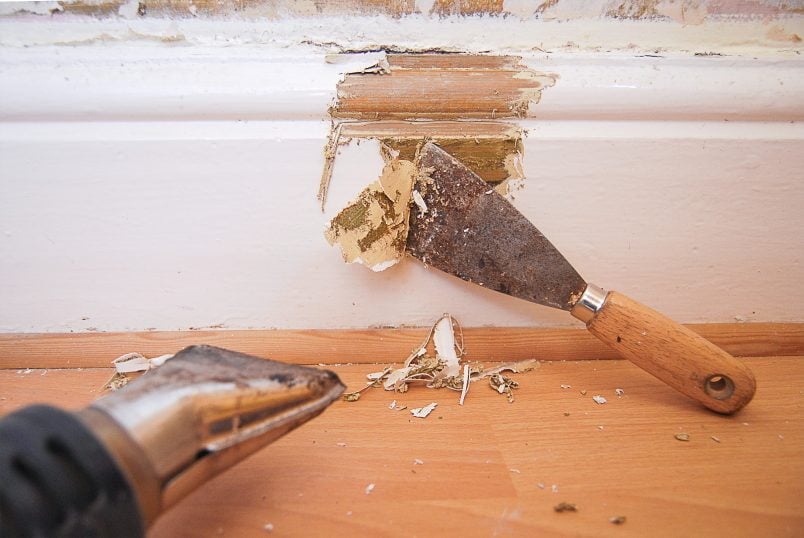
This post contains affiliate links. We only recommend products we love and think that you will, too! Read our full disclaimer here.
‘May contain lead paint’ is one of the many things that came up on the survey of our home before we bought it.
As with all surveys, I’m sure that the surveyor was covering himself to a certain degree, but hearing about all things that could be wrong with your home is a bit disconcerting, to say the least.
Lead paint, however, is a very common problem and it’s something that a lot of homeowners face – especially if you live in an older property, but it’s not all bad and we’re sharing exactly what to do if you find lead paint in your home, too.
First of all, check to see if your paint actually contains lead. If you live in a house that was built before 1960, it’s very likely that lead paint was used.
There are lead paint testing kits available that you can use to test if your paint contains lead. But whilst they’re great to give you an indication, they aren’t 100% reliable and even if the top layer of paint doesn’t contain lead, the older layers underneath could still be lead paint. Luckily, our test came back negative but it’s still a good idea to take safety precautions.
If you want to make 100% sure that you don’t have lead paint you should have a check carried out by a specialist company like Lead Paint Safety Association or Lead Test Home Analysis Service.
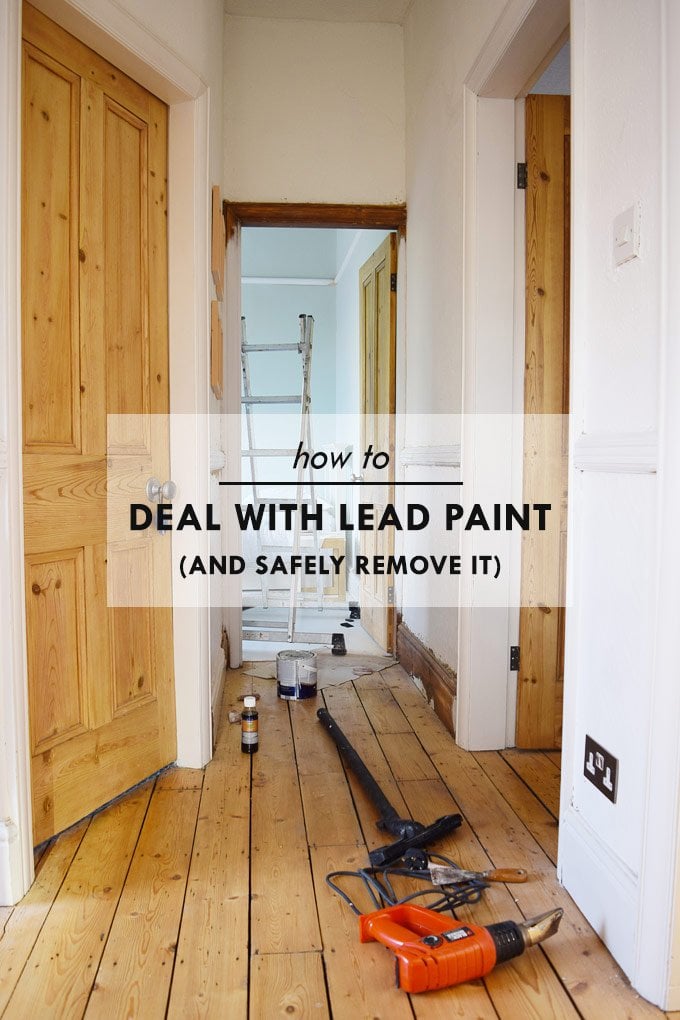
So, what to do if you have lead paint?
If you’ve done a test and you do have lead paint there’s still no reason to panic.
There’s only a risk to your health if the paint is unsound. If it’s in a good condition with no flaking, removing is actually a greater risk as it could lead to exposure of lead dust.
Old lead paint surfaces should only be treated or removed if the paint is flaking or peeling, or if dust particles are present.
If your paint is in a good condition, it’s best to paint over the lead paint and therefore cover and seal it with the new paint. If the paint isn’t in a good condition and is chipped, flaking or has lost its adhesion, you’ll have to remove it before repainting.
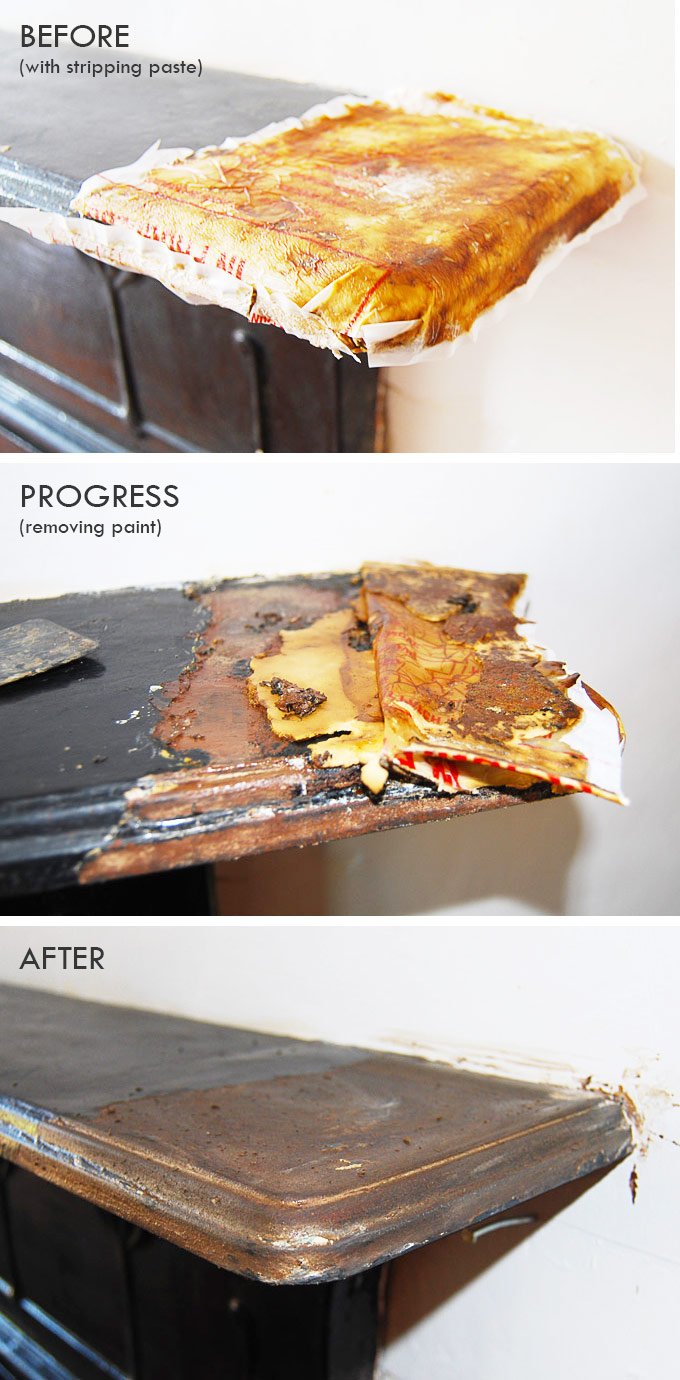
So, how do you safely remove lead paint from furniture, metal or woodwork?
The best and safest way to remove lead paint is with a chemical stripper which binds the particles in the paint and doesn’t cause dust. We’ve tried a lot of different strippers and our favourite one is PeelAway which works much better than any of the other paint strippers we’ve tested (and there have been a lot!).
Removing lead paint with a heat gun is a much less safe option and something we’d not recommend if you can avoid it. If you do decide to strip lead paint with a heat gun, it’s important to only soften the paint before scraping it off.
It’s also really important to not let the paint burn and of course, wear protective clothing and a mask. Really though, this method of paint removal should only be used if you don’t have lead paint.
The safest way to remove old lead paint is by taking anything you can remove from your home to be stripped for you.
We took all of our doors to a stripping company where they were dipped in a stripping bath and came back without the old layers of lead paint. It only cost about £15 per door and not only saved us a lot of time and effort but was also the safest way to remove old paint.
This method of stripping paint also works great for stripping things like furniture and fireplaces.
Not only is it the safest way to remove lead paint, but it’s also probably the most economical, too. Paint strippers can be expensive and you’ll be surprised at just how much it will cost to strip lead paint yourself!
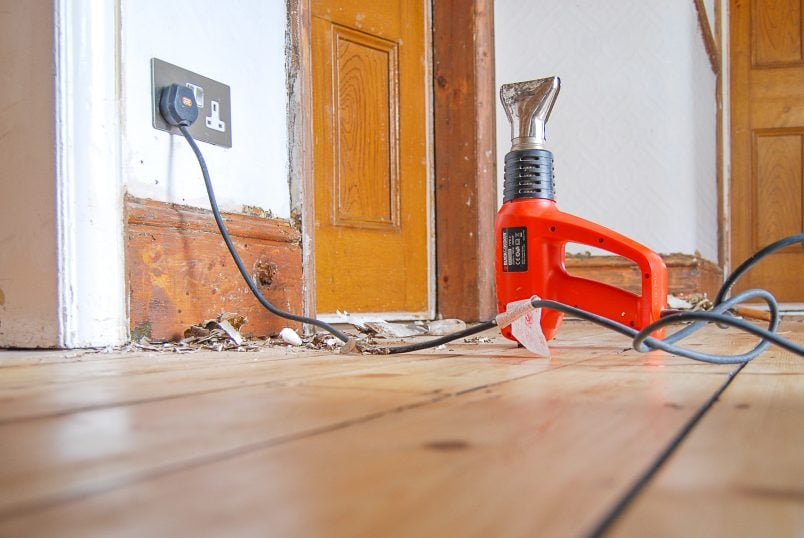
If you do decide to remove lead paint yourself, these are some of the things you should consider:
Most importantly – Be safe!
We stripped every bit of paint in our house and haven’t had any health issues, but it is, of course, important to take all possible safety precautions!
Removing lead paint can be dangerous and cause health issues. Don’t even think of attempting it if you are pregnant or have young children in the house. If you’re unsure of anything always consult a professional!
If you’d like some more information on how to deal with lead paint you can check out the Lead Paint Safely Association or British Coatings Federation.
What’s the biggest DIY hurdle you’ve ever faced? Do you have any hazards in your home?

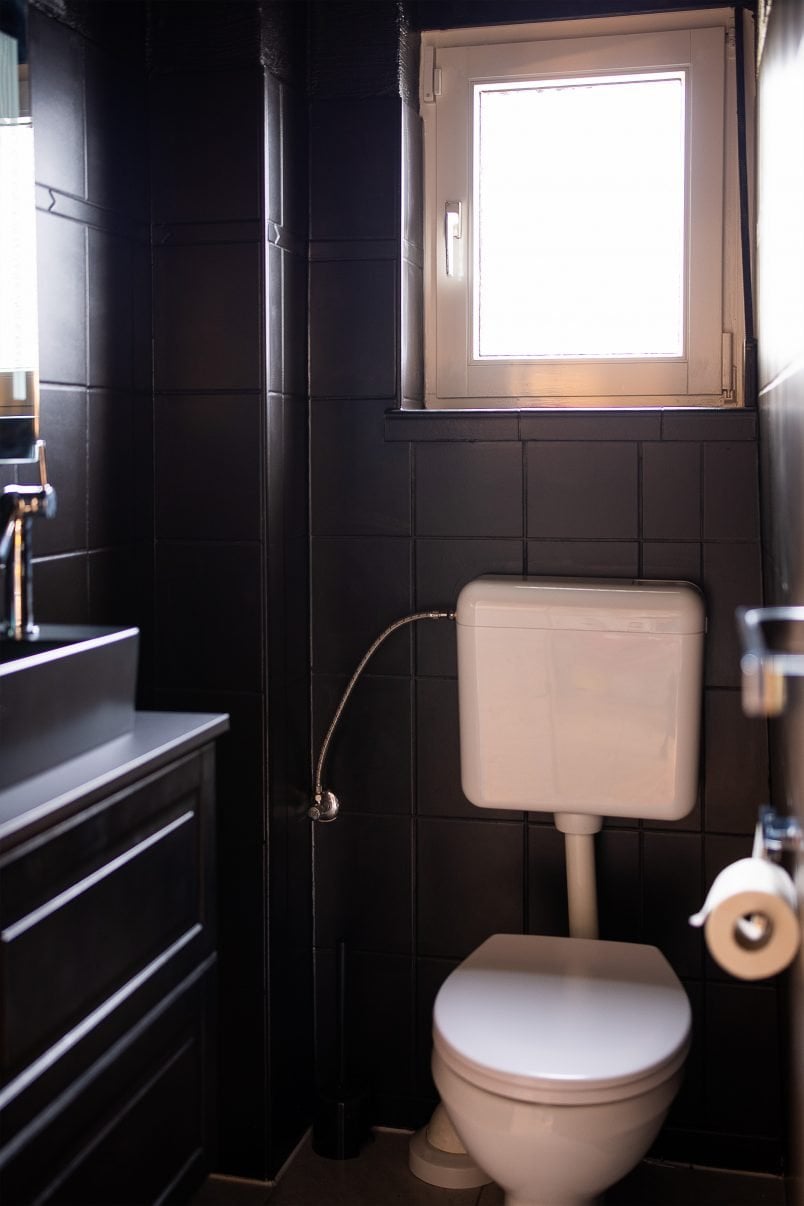
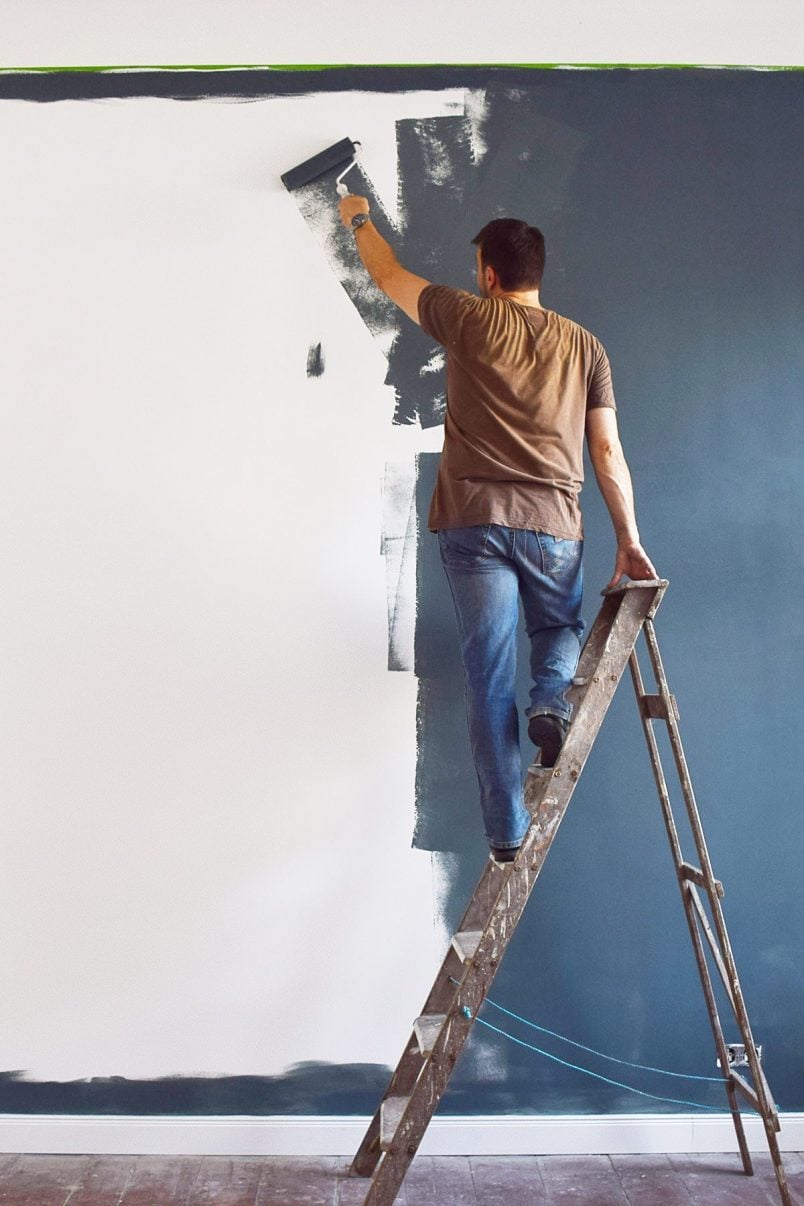
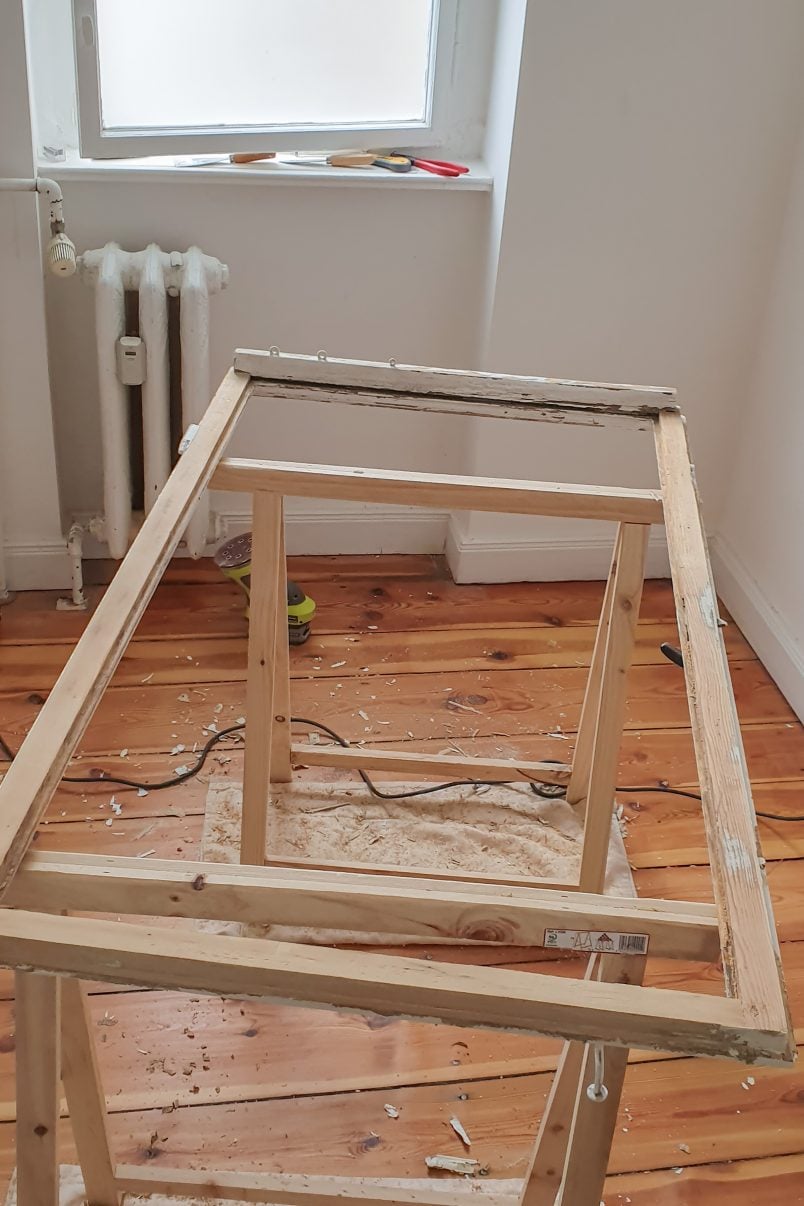
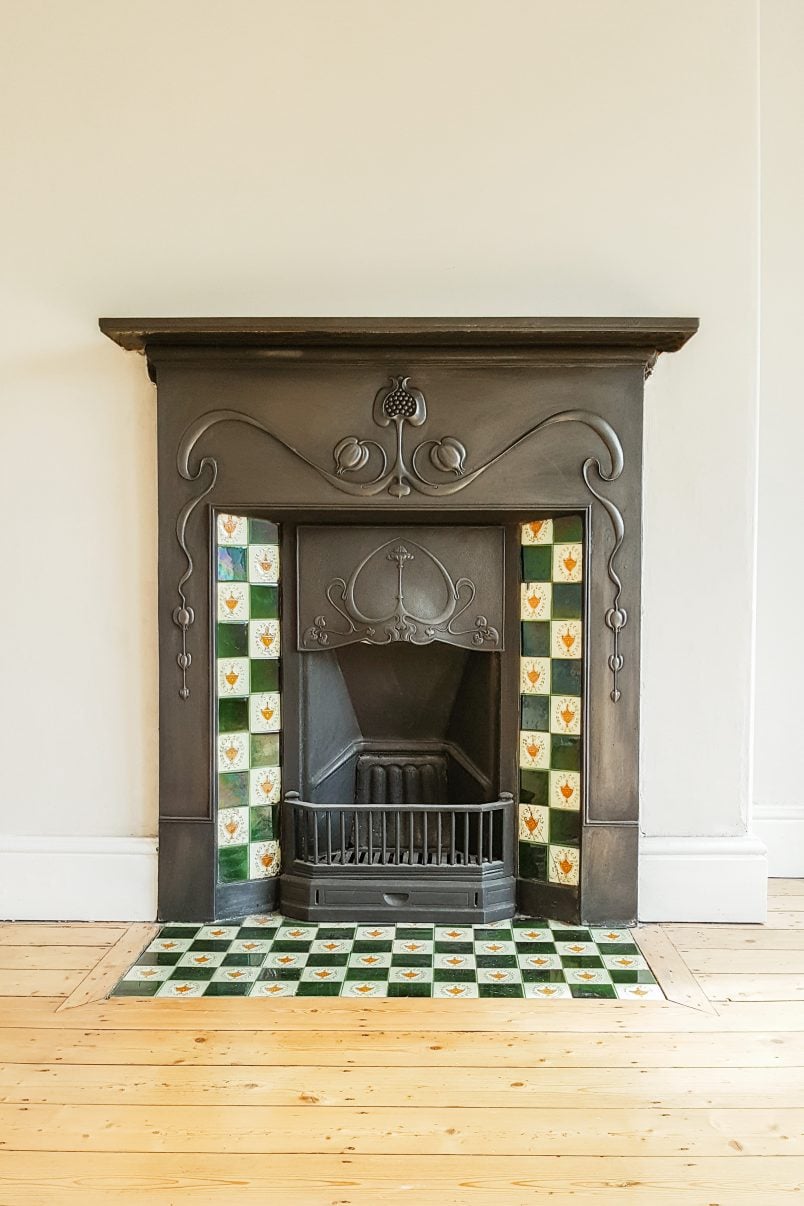

Aline says
Hello what company did you use to remove the paint from your doors? We’re in London and not sure who to ask/ where to go. Thank you
Christine says
We used a local company in Manchester to strip our doors. I just had a quick google and there are lots of companies in London, too. Just search for “door dipping london” and you should get lots of results near you.
Hope that helps and good luck with your doors.
Cx
Sandra Prisco says
You did all the lead paint stripping in your house yourself? That must’ve taken forever. Was it on all windows, windowsills, doors, door jambs, trim, etc? I am currently in a complete panic. We purchased a 200 year old home in some state of disrepair. We are having construction done before we move in so we aren’t in yet but I have three children (youngest is 5) and the windows and doors are all lead paint and not in good condition. I am talking to someone about having the doors dipped and stripped but there is so much of it and I am just filled with dread that in purchasing this house I have made a decision that will hurt my kids. Any words of comfort or advice would be greatly appreciated.
Christine says
I totally feel for you, Sandra. There’s no need to panic though! Yes, we stripped all of the wood ourselves and it took years to do. Our windows were already uPVC so we didn’t have any paint to strip there but we removed paint on everything else, including the staircase.
My biggest tip would be to take everything that’s removable to be stripped which will save you so much time and money. Other than that, your best option is to seal the lead paint by painting over it. Lead paint is generally only unsafe when it flakes or you sand it. As long as your children don’t nibble at your doorframes you shouldn’t have any problems. :)
Obviously, this will depend on the condition of the paint so you may want to get a specialist to inspect it and give you advice on how best to deal with it.
Please don’t panic though – it’s probably not as bad as you think!
Cx
Julien says
Hi there,
What did you use to repaint over the wood after stripping,? I’m looking at Zinsser Bullseye 123 as a sealer/primer then a matt finish on top. Its pretty hard to find any encapsulating paint in UK? Also, did you use a H class (hazard) vac to cleanup after? if not, any advice?
Thanks!
Christine says
We generally recommend Caparol Haftprimer to prime any surface as it’s super adherent and covers really well. Don’t forget to use a knotting solution before, though. We didn’t actually have lead paint in our house but use a Kärcher vacuum cleaner that has a great filter. If you want an H-class vac, we recommend checking out the Kärcher website.
Hope that helps!
Cx
Rachael says
Hi thereN,
Thanks so much for this very helpful post. We have just discovered we have a lot of lead paint in our 1920/1930s house and while i appreciate its a pain for everyone, its weirdly nice to feel lime we aren’t alone. We are planning to remove and have what we can dipped to remove the paint but some we will need to strip ourselves. However we have also discovered unfortunately we have it on our walls as well (nightmare!). I just wondered if you had any experience of removing lead paint from plaster and if so how you went about it?
Thanks so much!
Christine says
You’re definitely not alone, Rachael! So many of us have the same problem and we have loads of it in our new home, too. Having lead paint on your walls sounds like a complete pain and we’ve been lucky enough never to have that problem. Generally, lead paint is safe as long as it’s not flaking or peeling so I wonder if skimming over it to seal it would be the best option. As your home is so old, I assume it’s something you would have to do anyway so you may not even be creating more work for yourself. It’s probably worth getting in touch with the Lead Paint Safety Association to see if they have any advice though!
Cx
aussiebushgirl says
Hi Christine. Many thanks for sharing all this info with us! We’re about to tackle the skirting boards in our 1875 cottage which are badly chipped and probably dropping dust into the carpets (which will be lifted at some point too). Please could you advise me of the best way to tackle the job? My husband’s of the opinion we should remove the skirting boards, then use PeelAway to strip them back. In your opinion is it best to remove prior to stripping, or leave them in place? The front two rooms still have their original horse-hair plaster on the walls. If we remove the boards, we may run the risk of tearing the plaster on the walls! The house has had several owners over the years, one of which decided to go wild on colour! The doors and skirtings range from pink, through blue and bottle green. Unfortunately, my bedroom inherited bottle green!! Luckily, the sash windows were spared.
Talking about bedrooms. Since this is the room where our main focus on stripping will initially take place, do you have any tips on relocation and time-frame? We have two dogs and a cat to take into consideration as well. We are currently renovating the cottage ourselves, which makes relocation to another room tricky. May I ask how long you would consider safe before moving back into the bedroom?
Phew! Apologies for such a long read. Many thanks for all the tips you can throw my way. Heather :)
Christine says
It sounds like you’ve got your work cut out, Heather! I personally wouldn’t remove the skirting boards as you will chip and loosen bits of plaster. We removed the skirting in of our bedrooms and quite large chunks of the plaster came away with it. If you do remove the skirting, I wouldn’t bother to strip it yourself, though. Take it to a paint stripping place where the skirting will be dropped into a chemical stripper. This will be the by far safest option and will probably only cost the same (or less!) than if you were to strip them yourself.
If you do decide to strip the paint without removing the skirting, I’d definitely invest in some safety gear like some good quality masks (at least FFP2) and gloves. I honestly don’t know what the official advice is on how long to wait until you can use a room after removing lead paint, though. Stripping the paint will take a couple of days and I would personally move back into the room after a day of having the windows open. Again, this isn’t professional advice but I think you shouldn’t have too many problems if you keep the space ventilated, wear safety gear and keep your pets away.
Hope that helps a bit and good luck with all of your renovations!
Cx
Sophia says
Hi Christine, thanks so much for this article – very insightful.
We are slowly attempting to update our 1930s home and my partner has sanded one of the doors which we now think is lead-based paint. He hasn’t got around to re-painting it yet but I have now found out I am pregnant so keen to get it resolved ASAP. Is it sufficient to prime and re-paint with a water based paint or will the risk still be present?
He has also previously used a head gun to remove the paint on the staircase posts so we will definitely never do that again too. Very scary that this is so prevalent in our houses and we have no idea!
Christine says
Congratulations, Sophia! I totally understand that it’s something you’d like sorted – more now than ever. When it comes to doors, we always recommend taking them to be dipped and stripped. It’s super affordable (about £15 depending on where you live) and it makes the whole process so much quicker and easier. Having said that, I’d test it on onee door first as, depending on the condition of your doors, it could cause the glue to dissolve, too. (I would assume they’ll be fine in a 1930s house though).
I personally think it would be fine to repaint over the doors and think that that will be plenty safe enough (although we’re not professionals!). Having said that, if your doors are painted with oil-based paint, you can’t paint over them with water-based paint as it will probably start to flake. If you have the time, I’d take the doors to be dipped – purely because you’ll end up with a much better finish when you repaint them and the bonus is definitely that all paint will be removed safely.
Hope that helps and conagts again!
Cx
Rhiannon says
Hi, I found this post after testing my skirting and finding the bottom layer had lead – thanks, it’s really useful. Did you test areas after removing the paint and sanding? I’ve done some spot tests (it was a pack of 8) on doors and frames that the previous owner had stripped and that I’ve sanded and the tests are still showing positive – which is concern. I thought once the paint was removed the problem was solved. Does it seep into the wood ?
Christine says
No, we didn’t test after removing the paint – based on your experience, we probably should have, though!
I could imagine that your assumption is right and that the lead seeps into the wood. Maybe the old paint wasn’t completely removed either. Lead paint is such a pain but it’s almost inevitable when it comes to old properties.
Not sure that was much help but generally it should be okay once it’s sealed with another coat of paint. Just remember to always take any necessary safety precautions.
Cx
Rhiannon says
Thanks, that’s the plan, seal the exposed wood and keep that maintained. My next house will be a self build (or a van) :)
Christine says
Haha, not sure that sounds any less stressful!
Cx
criticalthinker says
Wow using a heat gun is suuuuuper unsafe because the lead in the paint can vaporize into the air and be inhaled. That’s infinitely worse.
Christine says
I totally agree! That’s why we recommend using a chemical stripper or, better yet, taking anything you can remove to be stripped for you. It’s always important to stay safe when doing any DIY work yourself!
Cx
Wendy says
Hello! Your Peel Away link didn’t work. Could you clarify if it is the one by Dumomd and whether or not the Smart Strip version? Thank you!
Christine says
Not sure why the link didn’t work, but it seems to be fine now. There’s also another link to it in the sidebar.
Either way the PeelAway (we used PeelAway1 which is far better than PeelAway7, but what you need will depend on your paint) is by Barrettine.
Hope that helps and good luck with your stripping Wendy!
Cx
Antonia Ludden says
Really helpful article! I’ve shared it on my facebook page as I don’t think there is a whole lot of info out there about this potential health risk. Everyone moves into their older properties and starts merrily sanding away the old skirting boards etc. I do think the big DIY stores should make the issue more prominent in their paint departments! They should have some leaflets for people about this issue at the very least, as many won’t have even considered it.
Thanks for sharing ! x
Christine says
Thanks Antonia – glad you liked it! I completely agree that most people just don’t know about the possible risks. It’s easy to get excited when you move into a new home but being safe has always got to be a priority!
Cx
Eve says
Hi Christine,
Thanks for this post – I was literally about to ask you about lead paint today, as I stumbled upon your site recently while searching for advice about restoring staircases (currently struggling through this project on our 1930s stairs). I have been using a heat gun mostly, and some nasty toxic chemical stripper for the hard to reach bits…
My question is; after the majority of the paint is gone, is the final step of sanding still hazardous would you say? Obviously sanding is an essential step before refinishing, but there’s always going to be some paint or paint residue left on the wood I’m thinking?! I guess it depends on how good a job you do stripping the paint?
A DIY forum I was reading a while back there was a bloke on there saying everyone is too uptight about lead paint and that we all breathed in a hell of a lot more lead back before unleaded fuel! I’m not sure if I find that comforting or terrifying!
Love your house btw :)
Christine says
Ohh, that was perfect timing then Eve! Yes, you will still have to do some sanding and yes, it can still be harmful. Sanding is the most important step when painting anything (don’t forget to lightly sand between coats of paint, too) and your finish will only ever be as good as the surface you’re painting. If the residue that’s left is smooth, you’re not going to notice it and I wouldn’t worry too much about small bits that are still left. To a certain degree I do think that we’re all overly careful nowadays, but having said that we often didn’t know better and if you know that something can be harmful it probably best to avoid it.
We still sanded everything (I think your meant to wet-sand it) and are fine, but it’s obviously not anything that we can recommend. Just make sure to take as many safety precautions as possible!
Hope that’s a bit of help!
Cx
KLS says
Oh lord not me finding this after heat gun stripping one of my Victorian bedroom door merrily with NO mask or even gloves. Thank god I found this before I did all four! It’s so bonkers I had NO idea about lead paint. Ordered a test and it is positive . Oh god!
Christine says
We have lead paint (and a few other even nastier surprises) in our new house, too. You’re not alone! Happy to hear you’re going to stay safe from now on.
Cx
Lucy Caitlyn says
Be aware of pets too. We only found out our old house had lead paint when our dog got sick.
He’d been chewing a corner of a bannister and got lead poisoning.
He ended up living to be 21, not bad age for a Border Terrier and not an experience I would want to relive.
Christine says
Ohh, that’s a really good point Lucy! Chewing banisters is definitely going to expose lead paint, even if it’s in a good condition and hidden under other paint.
Glad to hear that he recovered though!
Cx
Fantastic Builders says
Great point! We have heard many stories like yours. Lead paint is dangerous and should be removed. Christine’s blog post is really helpful. Especially, the mentioned steps that should be done before removing lead paint. Well done!